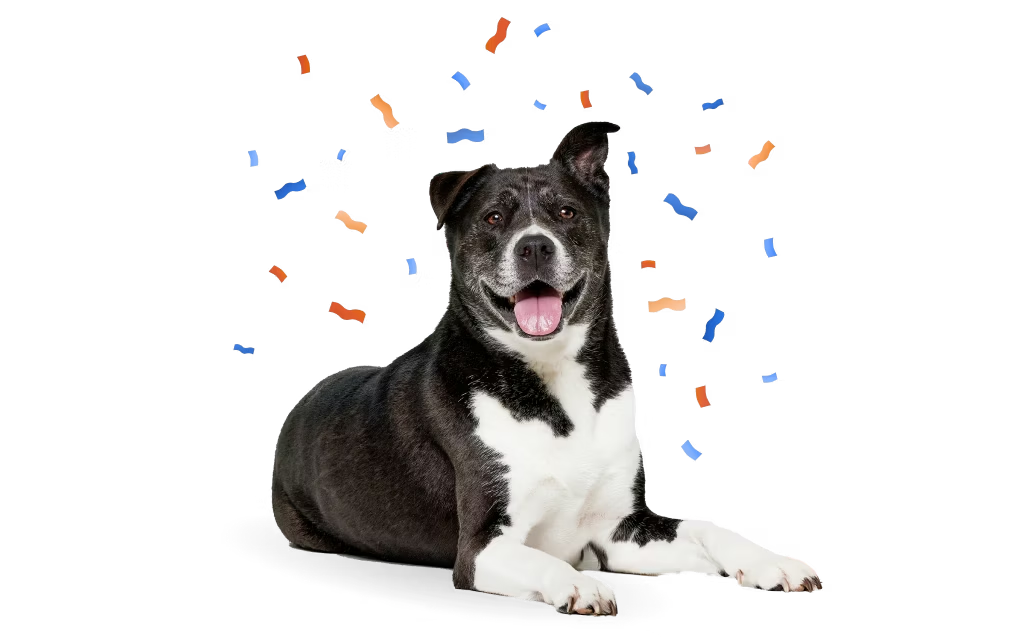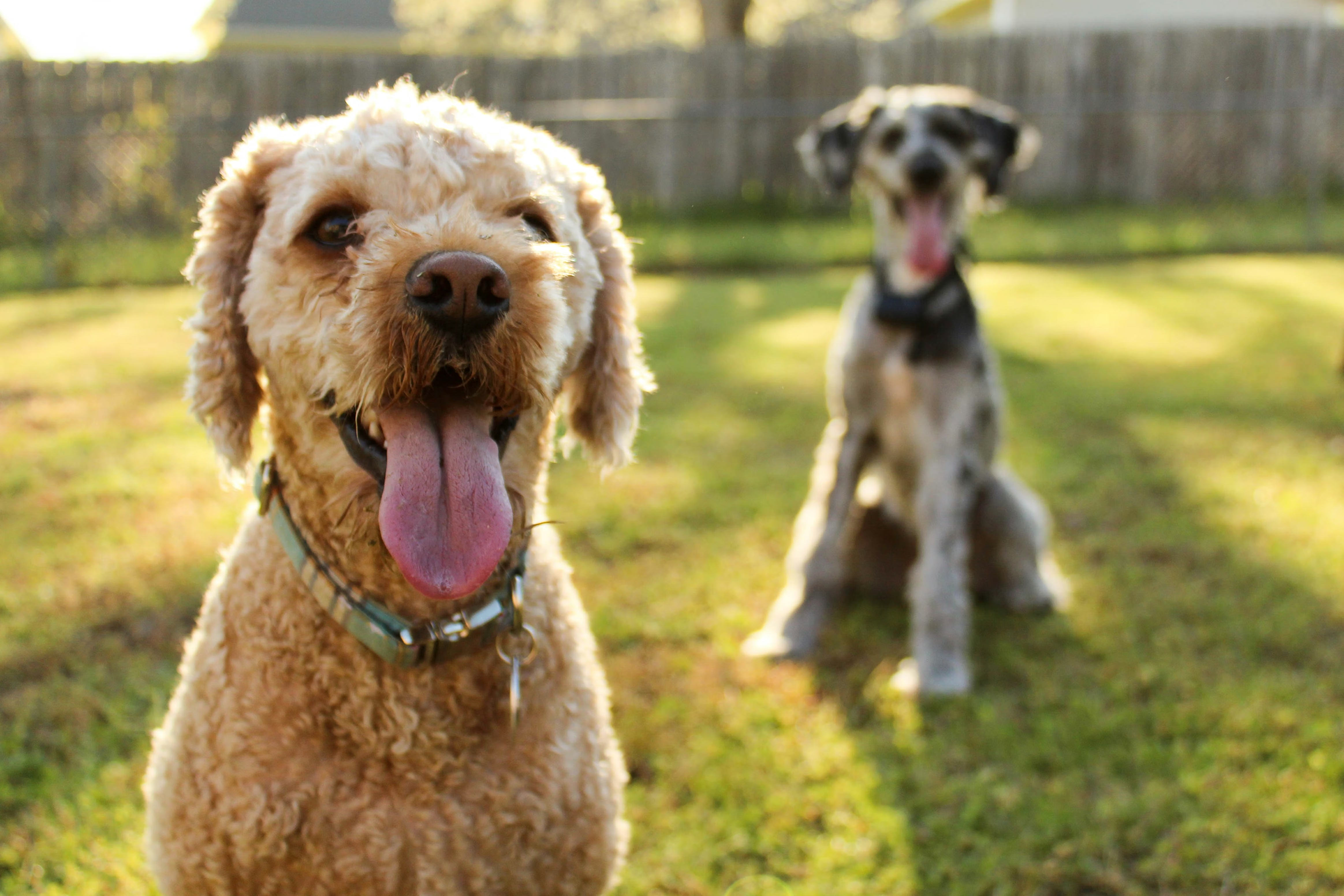Why is it important to know your dog’s breed?
If you’re a pet parent to a mixed breed, you’ve probably found yourself wondering, “What breed is my dog?” And while there’s something to be said for satisfying curiosity, understanding your dog’s breed can be beneficial when it comes to delivering tailored care.
Historically, dogs were selectively bred to perform specific jobs, such as herding, guarding, or hunting. And even if many dogs today don’t serve as working animals, they still retain the qualities and characteristics that made them good at their jobs. For example, a dog with Australian Cattle Dog in their ancestry is likely to be a high-energy pup that needs to keep busy and requires a lot of mental and physical stimulation. Understanding those innate requirements will help inform how much exercise they need, what toys they are most likely to enjoy, and what environment and lifestyle they’ll be most at home in.
Additionally, some breeds are more likely to have certain health conditions. Dogs with deep, narrow chests—like Irish Setters or Great Danes—may be more prone to a condition called bloat (also known as "twisted stomach,” GDV, or gastric dilatation and volvulus). If you knew your dog was an at-risk breed, there are steps you could take to reduce the likelihood of bloat occurring, such as using special bowls to slow down the dog’s eating, preventative surgery at neutering, or limiting exercise around mealtime.
And speaking of meals, nutrition also comes into play. Breeds like the Labrador Retriever and Scottish Terrier are often predisposed to allergic skin conditions. Adjusting their diet to limit common food allergens or increasing healthy oils such as fish oil, with your veterinarian’s guidance, may improve their overall skin health. Or, knowing that you have a large breed dog that’s prone to hip dysplasia, you might consult with your veterinarian on the best diet for weight control.
Of course, in order for any of these tidbits to be helpful, you have to actually know your dog’s breed. Which brings up the question, can mixed-breed dogs be accurately identified? Your veterinarian (or the shelter staff, if you adopted) may offer ideas about your pup’s ancestry. But when judging by visual cues alone, even experts misidentify a dog’s breed about 75% of the time.
So, in this post, you’ll learn four options—some more accurate than others—for figuring out what breed your dog is.
What methods are available for determining my dog’s breed?
1. Compare your pup’s physical traits to other breeds.
When trying to figure out a dog’s breed, most people start by looking. Such an approach is rather straightforward and only requires a bit of time and research. But it’s certainly not the most accurate way to identify your pup’s breed.
After all, physical appearance can be misleading due to how dogs inherit traits. And that means even experts may guess wrong—as veterinary geneticist Dr. Angela Hughes did when predicting Toby’s breed mix in the video below.
If you’d like to try your hand at visual identification, make a list of your dog’s notable physical characteristics—also called “phenotype”—such as:
- Head and muzzle shape and length (e.g., short and flat, blocky, narrow and pointed)
- Ear shape and carriage (e.g., pointed and erect, folded or droopy, small, average or large)
- Tail shape and carriage (e.g.,, held low or high, straight or curled)
- Body build and size (e.g., muscular and mighty, tall and slender, long and low)
- Coat texture, colour, length, and pattern (e.g., wiry, short, solid, spotted)
In general, you should prioritize clues in your dog’s shape (AKA, morphology) over their color or coat type because the former are a better reflection of your dog’s total ancestry. Colors and coat types, on the other hand, are often the result of single genes. And when hundreds of breeds share the same coat color genes, guessing breeds gets a lot harder!
So, look at your dog’s head shape, tail carriage, and ear shape and size first. For example, does your pup have a:
- Heavily boned and blocky head? That’s common for guard dog breeds.
- Long and narrow nose? Collie, German Shepherd, Dachshund, or Doberman might be likely.
- Curly tail? That may mean an ancient breed, though there are exceptions (e.g., Pomeranian).
- High-set ears? That likely rules out a sporting breed like a Labrador Retriever.
- Enlarged ears? Think hounds or sporting breeds (e.g., spaniels, retrievers, pointers, setters).

A common morphology “gotcha” to keep in mind:
A single gene causes short legs, and 40+ breeds (not just Dachshund, Pembroke Welsh Corgi, and Basset hound) carry it. For example, the Shih Tzu, Chihuahua, and Yorkshire Terrier often carry the trait. But most people don’t consider such breeds when they think “short legs.”
Besides the above, be sure to write down any unique features, as well as distinct personality traits and behaviors. Does your dog love water? Do they try to “herd” people and other animals? These are great clues!
Once you have your list, it’s time for some investigative work. Start searching online for dogs that match your pup. Once you’ve identified a few potential candidates, browse our breed library for dog facts and photos to learn more about them.
Guessing by looks alone can be fun, but it’s not foolproof. After all, some genetic traits are recessive, so your pup may not show visible signs of every ancestor.

2. Take a dog breed identification quiz.
Don’t have time for all the research required by the first approach? Online dog breed quizzes take most of the legwork out of visual identification. After answering a few simple questions about your dog’s appearance and traits, you’ll get a list of possible matches.
Like the option above, quizzes rely on visual cues. So, they probably won’t get the ancestry 100% right—especially if several breeds make up your mix. Still, they’re pretty fun to take.

3. Download a dog breed identifier app.
There are a few free apps that use machine learning algorithms to predict a dog’s breed mix based on a photo. As a result, this option isn’t much more accurate than the previous two since figuring out breed based on looks alone can be tricky.
To give you an idea of how tricky, here’s a quick test: Which of the following dogs do you think has Border Collie in its recent ancestry?

The correct answer is #2. Did you guess right?
Let’s try again: Which of the following dogs have a Labrador Retriever as a close relative?

Believe it or not, the correct answer is #3. Not sure about you, but that would’ve been our last guess! And it likely would have stumped an algorithm, too.
Though far from perfect, breed identifier apps—like the quizzes—can yield amusing results. If you want to give this approach a shot, here’s the Dog Scanner app that we tried. But just how accurate is the Dog Scanner app? According to their website, the app gives "educated projections based on what it sees." So while it may be short on science, it could provide a little bit of fun.

4. Use a dog DNA test.
The methods above may be entertaining. But if you truly want to be confident about your pup’s breed make-up, there’s really only one choice: a dog DNA test. This option looks past your pup’s outward appearance and uses genetic clues to determine their ancestry.
For the highest accuracy, you’ll want a test with a sizable reference sample database. Why? Because DNA test algorithms compare submitted genetic samples against other samples in a database to determine the best match. So, a bigger pool of samples makes a test “smarter.” And that means more reliable results.
Using the largest dog breed database in the world, Wisdom Panel™ tests screen for 350+ breeds, types, and varieties. As a result, we can identify breeds that other services don’t even test for.
We also report breed mix down to 1%, trace ancestry back three generations, test for health conditions and traits, and more!
Learn more about dog DNA testing →
Identifying dog breed 101
To demonstrate the differences between these four approaches, let’s use Koda, the pup pictured above, as an example.
Like most dog owners, Koda’s parents first used visual and behavioral cues to guess his breed background. They predicted he was a mix of:
- Siberian Husky (because of his coat color and markings)
- Labrador Retriever (because he loves water and playing fetch)
- German Shepherd (because of his build)
Next Koda’s parents took a dog breed quiz, which returned the following breed results:
- Miniature Schnauzer
- Chesapeake Bay Retriever
- Labrador Retriever
As you can see, things are already getting a bit inconsistent! But wait—it gets better. The “Dog Scanner” app predicted Koda was a mix of:
- Perro de Presa Mallorquin
- Siberian Husky
- German Shepherd
- Carolina Dog
Eager for a more definitive answer, Koda’s parents finally used a Wisdom Panel™ Premium dog DNA test. And after evaluating his genetic profile, the test revealed Koda was part:
- Siberian Husky (26%)
- American Staffordshire Terrier (14%)
- Akita (13%)
- Labrador Retriever (13%)
- Golden Retriever (13%)
- Kishu Ken (6%)
- Mudi (6%)
- Chow Chow (4%)
- White Swiss Shepherd (2%)
- Finnish Lapphund (1%)
- Drever (1%)
- Norwegian Buhund (1%)
As you can see, each of the visual identification methods guessed some breeds correctly. But they several missed others or even wrongly predicted a few.
However, the dog DNA test provided the most complete, most accurate picture of Koda’s breed background—allowing his parents to understand him better. Suddenly, it was clear where Koda’s protective tendencies came from (Akita, AmStaff). And his dense coat was no longer a mystery (Chow Chow, Akita, Husky).
As added benefits, Koda’s DNA test ruled out life-threatening genetic health conditions (whew!) and gave his parents ideas for activities and training techniques he’d enjoy.



